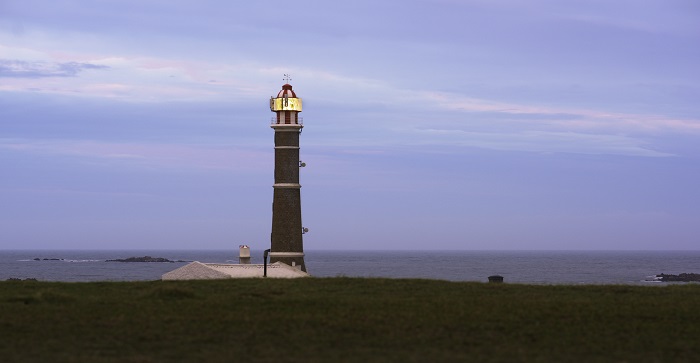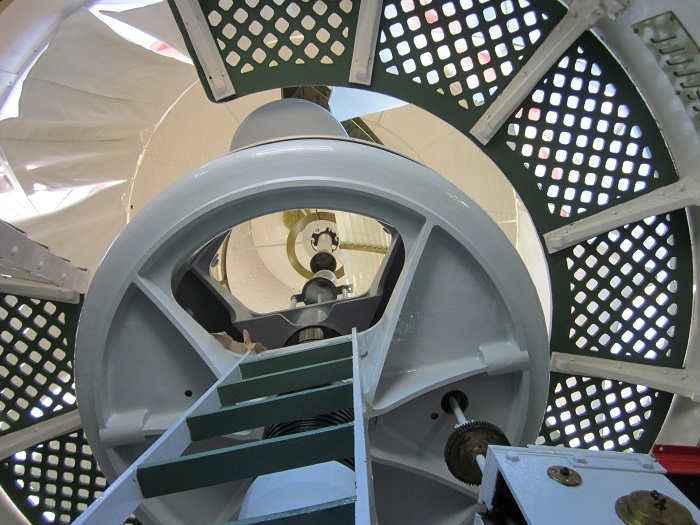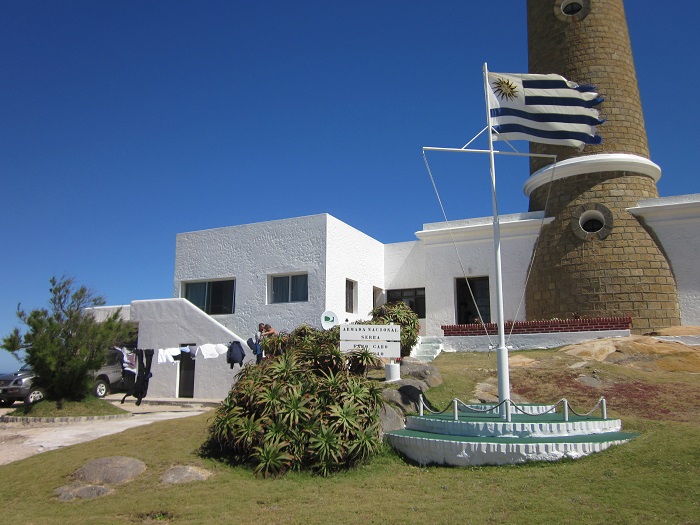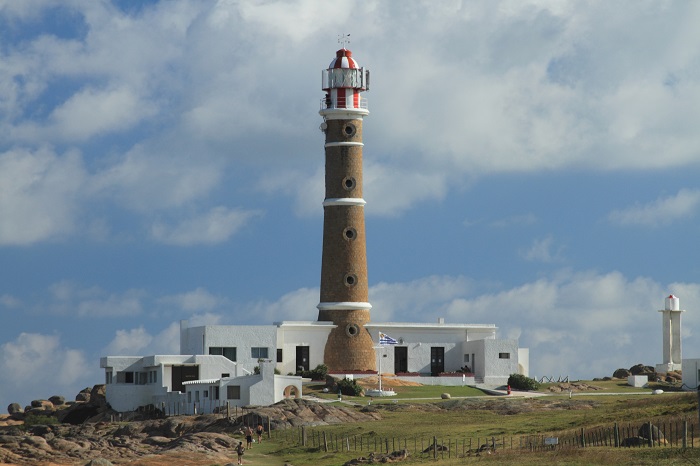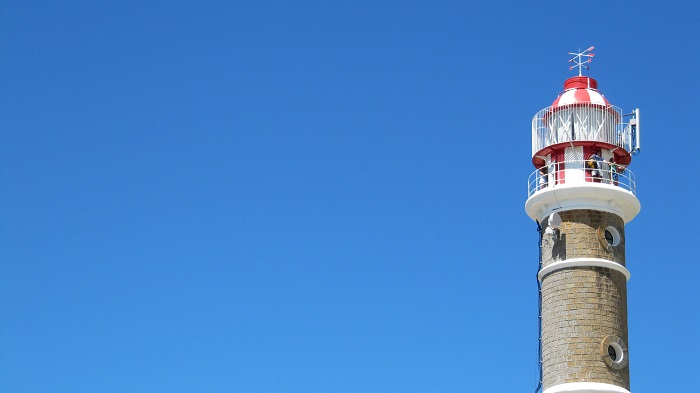Cabo Polonio Lighthouse, locally known as Farol de Cabo Polonio, is an iconic lighthouse that is located in a remote and picturesque area in the Rocha Department on the eastern coast of the Oriental Republic of Uruguay. Known for its rugged beauty and serene atmosphere, Cabo Polonio is a unique destination that offers a stark contrast to the more developed tourist areas in the country as it stands as a testament to the area’s maritime history and serves as a popular attraction for visitors seeking a tranquil escape amidst nature.
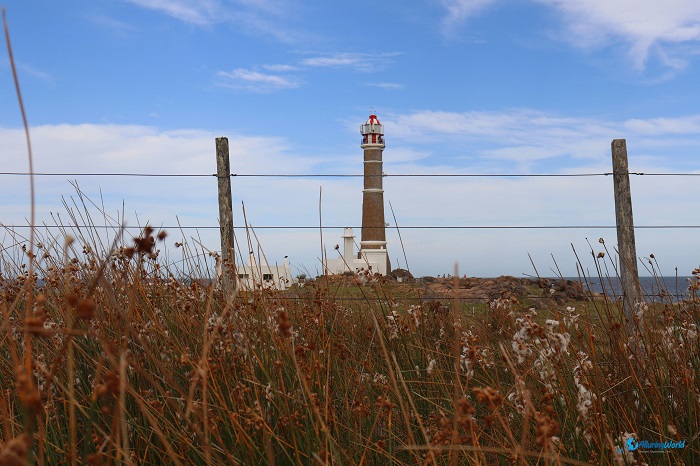
Located more precisely within the Cabo Polonio National Park, a protected area known for its diverse ecosystems and stunning landscapes, it needs to be noted that the region is characterized by vast sand dunes, rocky coastlines, and expansive beaches that stretch along the Atlantic Ocean. The lighthouse sits on a rocky headland, offering commanding views of the ocean and the surrounding environment, and the access to Cabo Polonio is part of the adventure, as the area is not reachable by standard vehicles.
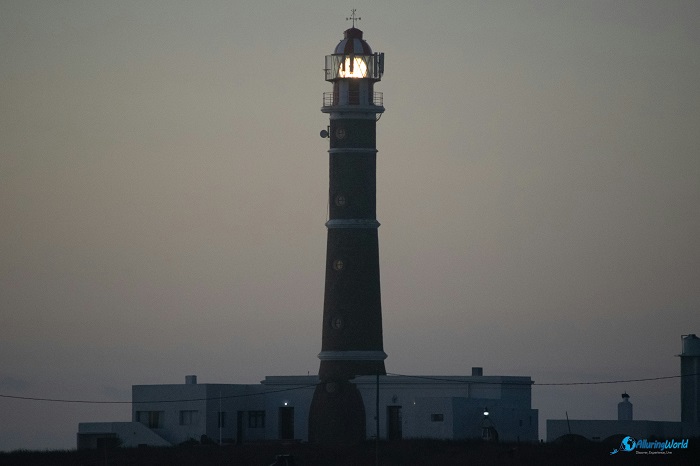
There are different ways on how one can get to this tranquil place, but in any way, getting there is an adventure in itself. The journey begins by taking a bus or driving to the small village of Barra de Valizas, approximately 260 km(162 mi) east of Montevideo, the capital city of Uruguay. Visitors must leave their cars at a designated parking area near the village of Barra de Valizas or the entrance to the national park and from there, special 4×4 vehicles transport visitors across the dunes to the village of Cabo Polonio, which is situated about 7 km (4.3 mi) from the main road and it is about 30 minutes ride.
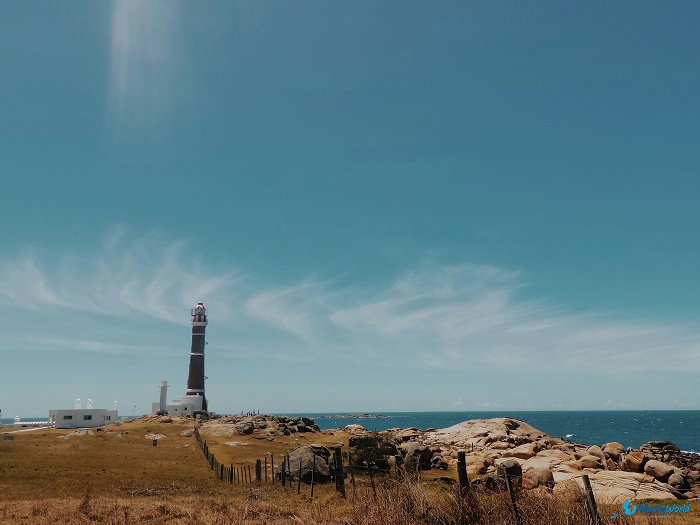
Another option is to trek along the beach and dunes which takes about two to three hours. Still, the journey through the sand dunes is quite the memorable experience as it adds to the sense of seclusion and remoteness that defines Cabo Polonio and the rugged national park.
The Cabo Polonio Lighthouse was built in 1881 and has been guiding ships along Uruguay’s treacherous coast for over a century. Standing at 26 m (85 ft) tall, the lighthouse is constructed of brick and painted in a distinctive white color with red trim, making it easily visible against the blue ocean backdrop, but the lighthouse’s light has a range of about 40 km (25 mi), ensuring the safety of passing ships navigating these often tumultuous waters. Visitors can climb the lighthouse’s spiral staircase to reach the top, where they are rewarded with breathtaking panoramic views of the Atlantic Ocean, the surrounding sand dunes, and the village of Cabo Polonio. The view is particularly stunning at sunrise and sunset, when the light creates dramatic colors over the vast expanse of sea and sand.
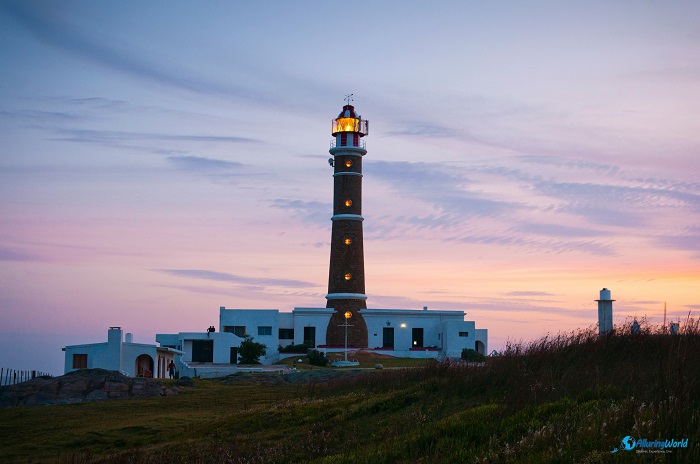
The village of Cabo Polonio itself is a unique and off-the-grid community that adds to the area’s charm because it has no electricity or running water in most homes, and life here is simple and connected to nature. The village is home to a small population of permanent residents, including fishermen, artisans, and free-spirited individuals who have chosen to live away from the hustle and bustle of modern life. Cabo Polonio’s lack of urban infrastructure allows for an unspoiled and authentic experience, where the sounds of the ocean and the wind are the primary background music.
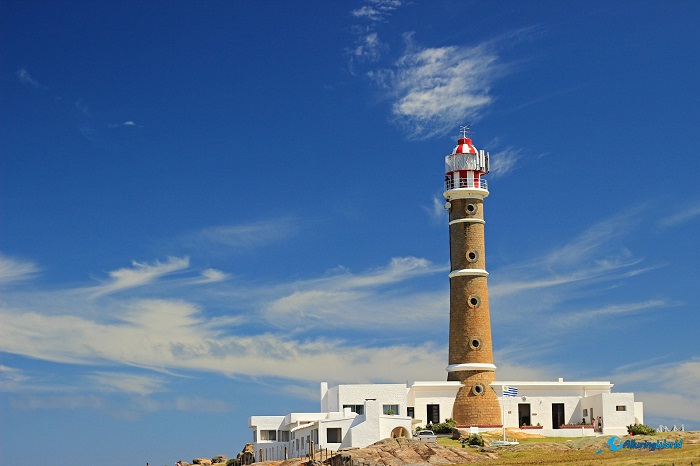
What’s more interesting is that Cabo Polonio is also renowned for its rich biodiversity and wildlife. The region is home to one of the largest sea lion colonies in South America, and visitors can observe these majestic creatures lounging on the rocky shores or playing in the surf. The area is also a haven for birdwatchers, with a variety of bird species inhabiting the dunes and coastal cliffs, including cormorants, seagulls, and plovers. The surrounding national park features a mix of coastal and forest ecosystems, offering opportunities for hiking and exploring the diverse landscapes.
In addition to its natural beauty and wildlife, Cabo Polonio has further a rich cultural and historical significance since the area has been inhabited for centuries, with the lighthouse serving as a crucial navigational aid for maritime traffic along the South Atlantic coast. Nowadays, Cabo Polonio is a popular destination for tourists seeking a peaceful retreat and a chance to reconnect with nature because the village has a few small hostels, guesthouses, and restaurants offering fresh seafood and traditional Uruguayan cuisine, ensuring that visitors have a comfortable stay while immersing themselves in the local culture.
For those looking to explore further, the nearby village of Barra de Valizas offers additional opportunities for adventure. Visitors can hike along the beach or through the dunes to reach Cerro de la Buena Vista, a hill that provides sweeping views of the surrounding landscape and the Atlantic Ocean and the journey to Barra de Valizas is another way to experience the beauty and tranquility of this unique coastal region.
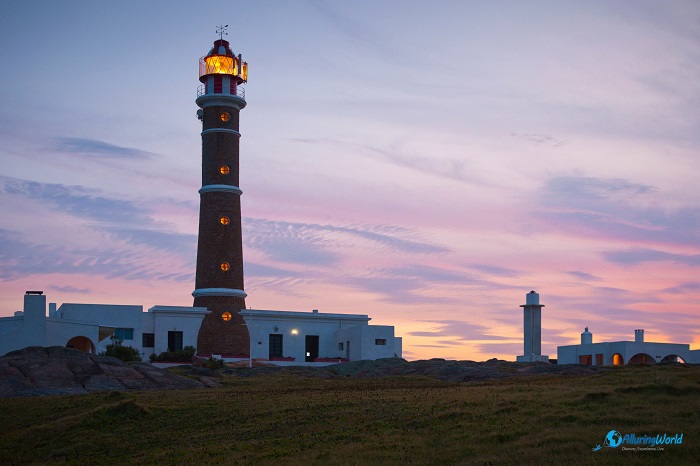
The best time to visit Cabo Polonio is during the summer months, from December to March, when the weather is warm and ideal for enjoying the beach and outdoor activities. During this time, the village comes alive with tourists and offers a vibrant atmosphere with local artisans, music, and various events but most importantly the ocean is inviting for swimming and surfing, and the weather is perfect for exploring the area’s natural beauty, including its famous lighthouse and sea lion colony. Visiting during the off-season (April to November) has its charms as well, as it offers a more peaceful experience with fewer tourists and cooler temperatures. During these months, people can enjoy quiet walks on the beach, the dramatic scenery of the dunes, and cozy evenings in rustic accommodations, but visitors should be prepared for cooler temperatures and limited services.
In conclusion, Cabo Polonio Lighthouse and its surrounding village offer a unique and unforgettable experience for travelers seeking a break from the ordinary. The combination of stunning natural beauty, rich wildlife, and a simple, off-the-grid lifestyle makes Cabo Polonio a destination unlike any other, and whether you’re climbing the lighthouse for panoramic views, watching sea lions bask in the sun, or simply relaxing on the pristine beaches, Cabo Polonio provides a rare opportunity to experience the raw and unspoiled beauty of Uruguay’s coastline.


